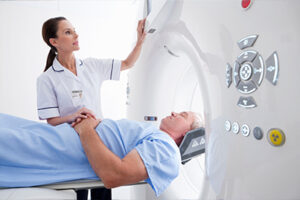According to World Health Organization estimates, adults between 18 and 65 experience a headache at least once a year. In addition, 30% of those adults report experiencing a migraine. Migraine headaches can be quite crippling for those who experience them.
What are Migraine Headaches?

Migraines feel like throbbing pain in one part of the head. They create a sensitivity to light and sound. They may also experience vomiting and nausea. Migraine headaches are not the same for everyone.
Symptoms of Migraine:

Symptoms of migraine differ from the normal headaches most people usually experience. People in their 30s tend to experience migraines most. They can also initiate in teenagers, and the frequency tends to decrease as you get older.
Usual symptoms of migraines can include blurred or lost vision, tingling sensations, hearing weird sounds, and experiencing flashing lights. In other cases, people suffering from migraine headaches can feel nauseated, retreat into a dark room, and/or develop light sensitivity.
Most people who understand their symptoms can start predicting when a migraine is on the way.
Some migraine symptoms are more serious and concerning than others. In such a scenario, a health practitioner should be consulted immediately. Migraine symptoms can appear in stages as well.
A day or before the migraine headache, you may experience moodiness, anxiety, crankiness, food cravings, stiff neck, excessive yawning, loss of appetite, crankiness, or feeling thirstier than usual.
Some symptoms are experienced just before or during the headache. They can be light in the beginning but become severe over time. These usually last from 20 minutes to an hour and can include vision loss, feeling needles in arms or legs, experiencing numbness or weakness in one side of the body, having trouble talking, uncontrollable movements, and/or hearing non-existent sounds.
During the headache, symptoms you experience can include becoming sensitive to light, vomiting, feeling lightheaded, and having blurry vision. These can linger up to 24 hours after the migraine ends. Other symptoms after the migraine include dizziness, feeling confused or elated, experiencing mood swings, and/or feeling drained.
Types of Migraine Headaches
Migraines can be divided into two main categories. One category is migraine with aura while the other is without aura.
Migraine with aura affects 1 in 4 people. Those suffering from this type of migraine may lose their vision for 10 to 30 minutes, feel a tingling sensation in their legs or arms, and may experience a difference in taste, smell, or speech.
There are several subtypes of migraine headaches that can make the migraine diagnosis difficult. These include episodic, chronic, hemiplegic, silent migraine, abdominal migraine, and ophthalmoplegic migraine, among others.
Steps for Migraine Diagnosis
A migraine diagnosis is mostly conducted in three steps. The doctor will need to know your history of headaches and overall health to get a clear picture.
In some cases, further testing may be required. A migraine diagnosis usually includes an examination, gathering medical history, and conducting a CT scan or MRI scan to rule out other conditions.
Gathering Your Medical History:

The first thing any doctor would do is gather your medical history, which includes your family medical history. You should know your symptoms and share as much detail as possible. Furthermore, your physician will inquire about other health conditions you may have.
Your health practitioner will also ask about your stress levels, diet, and other aspects of your lifestyle. Migraines can also be genetic, and it is important to tell your health practitioner if you have others in the family who suffer from migraine headaches.
Performing a Medical Exam
The next step in migraine diagnosis is checking your flexes and response to sensations. The health practitioner will also test your short-term memory and take your pulse and blood pressure. The examination will also include checking your shoulders, head, and neck.
In most cases, medical history and a medical exam are enough to diagnose migraines. In other cases, your health practitioner may not be certain about the cause of symptoms, leading to the next step.
Conducting a Scan:

If you experience sudden pain and the symptoms don’t generally reflect a migraine headache, the doctor may order a scan to identify the root cause of the pain. These can include conducting a CT scan or an MRI scan.
MRI Scan:
An Open MRI scan is used to diagnose tumors, infections, bleeding, or other anomalies in the brain that could be causing headaches.
CT Scan:
A CT scan gives a detailed image of the brain and is used to rule out any abnormalities in the brain that can be the source of headaches.
Treatment for Migraine Headaches:

Treatment for migraine headaches includes two steps. Your health practitioner will first try to stop the pain and symptoms of migraine, and the second is to prevent it from occurring again.
Treatment for stopping symptoms of migraine usually includes the use of medications. These can include triptans, OTC pain relievers, opioids, anti-nausea medications, and dihydroergotamines.
To prevent migraine headaches, treatment includes identifying the triggers and avoiding them. You could be asked to keep a note of your triggers in a journal. Your doctor may prescribe beta-blockers to prevent migraines. These are given to people who have high blood pressure.
Using calcium channel blockers is another treatment option for migraine. These are effective, especially for people who experience migraine with aura.
Other treatment options to prevent migraines include antidepressants, antiseizure medications, or botox injections. Botox injections are usually used in cosmetic procedures but can also be used for migraine prevention. If your doctor recommends botox injections, one injection is given every 12 weeks.
End Word
The correct migraine diagnosis is essential for the right treatment plan. Therefore, it is essential to note down your symptoms and severity of the migraines and communicate with the doctor. You should share with them what is effective and what isn’t.
Once your physician is able to conduct your migraine diagnosis, they can help establish the best prevention methods. Migraine triggers can also be related to lifestyle and everyday habits, which include lack of exercise, not getting enough sleep, skipping meals, or being under stress.
Managing your daily health habits can help lessen the migraine or prevent it. For some people, triggers can also include certain foods and drinks. Avoiding chocolate, cultured dairy, MSG foods, processed foods, or red wine can have a positive effect.
If you experience any of the above symptoms, you should visit your physician immediately. If your doctor recommends, choose a trusted diagnostic imaging center for an MRI Scan or CT Scan.

